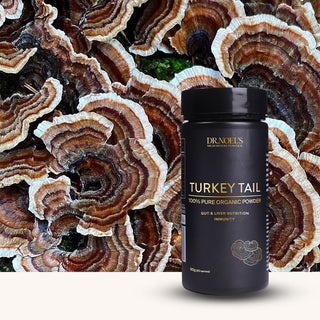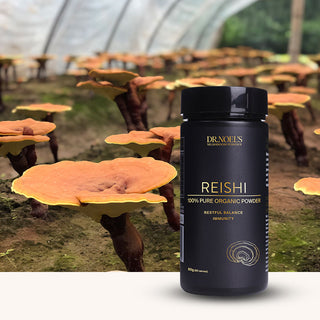Chaga (Inonotus obliquus): Biological Activity and Potential Applications

Inonotus obliquus, commonly known as Chaga, is a wood-decay fungus that thrives in cold climates between latitudes 40°–68°N. It is widely distributed across northern North America, Finland, Poland, Russia, Japan, and parts of northeastern China such as Heilongjiang and Jilin provinces. Chaga is an extremely cold-tolerant fungus that primarily grows beneath the bark of birch (especially white birch and silver birch), elm, and alder trees, often causing white rot in its host.
Due to long-term seasonal exposure to extremely low temperatures, Chaga grows very slowly. Over many years, it forms wedge-shaped sterile conks (sclerotia) with diameters ranging from 5 to 40 cm. These hard, black, cracked masses protrude through the bark of the tree, forming irregular fissures. Internally, the conk is a rust-coloured woody matrix composed of dense, interwoven hyphae.
1. Biological Activities of Chaga
1.1 Antioxidant Properties
It has been found that each gram of Chaga contains up to 35,000 units of active enzymes, which is 23 times more than Agaricus blazei, 25 times more than Lion’s Mane, 31 times more than Maitake, and 55 times more than Reishi. Chaga is rich in antioxidant compounds, including substances similar to superoxide dismutase (SOD).
Frequent consumption of antioxidant-rich Chaga can help the body effectively combat damage caused by reactive oxygen species (ROS). Research by BURMASOV A and colleagues identified a phenolic melanin compound in Chaga that possesses powerful antioxidant activity and DNA protective properties, making it a promising anticancer agent.
Other studies, such as one by Cui Tao et al., found that Chaga polysaccharides protected mice from liver damage induced by cyclophosphamide, possibly due to their ability to inhibit lipid peroxidation.
1.2 Anti-inflammatory Effects

Chronic inflammation is a contributing factor in the development of many diseases, including various cancers, atherosclerosis, autoimmune disorders, and obesity.
Upon stimulation by lipopolysaccharides (LPS), the body releases a cascade of pro-inflammatory mediators including prostaglandins, cytokines (such as TNF-α, IL-1β, and IL-6), and nitric oxide (NO). Studies have shown that Chaga polysaccharides (IOP) can inhibit the production of NO and other pro-inflammatory mediators, thus exerting an anti-inflammatory effect.
Additionally, in studies on inflammatory bowel disease, Chaga polysaccharides were found to inhibit the JAK-STAT signaling pathway, thereby modulating helper T cell subsets and reducing overall inflammatory response.
Chaga polysaccharides have also shown inhibitory effects on hepatitis C and HIV, indicating broad anti-inflammatory potential.
1.3 Antiviral and Antibacterial Properties
Research has shown that Chaga polysaccharides can inhibit a variety of viruses, including feline calicivirus, feline herpesvirus type 1, feline influenza virus, feline infectious peritonitis virus, and feline panleukopenia virus. In all five virus subtypes, inhibition of both RNA and DNA viruses was observed.
Chaga also shows anti-herpes simplex virus (HSV) activity. Its extracts inhibit virus-induced membrane fusion, which blocks early-stage HSV infection. It is believed that Chaga extract directly targets viral glycoproteins, thereby preventing HSV-1 from entering host cells.
Currently, HSV treatment relies on nucleoside analogue antiviral drugs. However, with the rise of drug-resistant HSV strains, Chaga offers a promising alternative due to its distinct antiviral mechanism.
In addition to antiviral effects, Chaga extract has shown antibacterial and probiotic-modulating properties. It can stimulate nitric oxide production and enhance phagocytosis in RAW264.7 macrophage cells.
Furthermore, Chaga polysaccharides have been found to regulate the gut microbiota composition and diversity in mice with chronic pancreatitis, promoting a healthier microbial balance.
Reference:
Ma Chuanguai, Zhang Zhixiu, Xiao Bao, Zhong Yaoqiang. Biological Activities and Application Research of Inonotus obliquus, Edible Fungi, March 21, 2022.






